 W
WYoshitaka Amano is a Japanese visual artist, character designer, illustrator, a scenic designer for theatre and film, and a costume designer. He first came into prominence in the late 1960s working on the anime adaptation of Speed Racer. Amano later became the creator of iconic and influential characters such as Gatchaman, Tekkaman: The Space Knight, Hutch the Honeybee, and Casshan. In 1982 he went independent and became a freelance artist, finding success as an illustrator for numerous authors, and worked on best-selling novel series, such as The Guin Saga and Vampire Hunter D. He is also known for his commissioned illustrations for the popular video game franchise Final Fantasy.
 W
WShūsaku Arakawa was a Japanese conceptual artist and architect. He had a personal and artistic partnership with the writer and artist Madeline Gins that spanned more than four decades in which they collaborated on a diverse range of visual mediums, including: painting & printmaking, experimental filmmaking, performance art, and architectural & landscape design.
 W
WFrances Blakemore was an American-born artist, author, curator, and art collector who spent more than 50 years of her life in Japan.
 W
WLéonard Tsuguharu Foujita was a Japanese–French painter and printmaker born in Tokyo, Japan, who applied Japanese ink techniques to Western style paintings. He has been called "the most important Japanese artist working in the West during the 20th century". His Book of Cats, published in New York by Covici Friede, 1930, with 20 etched plate drawings by Foujita, is one of the top 500 rare books ever sold, and is ranked by rare book dealers as "the most popular and desirable book on cats ever published".
 W
WFujimori Shizuo was a Japanese woodblock artist associated with the sōsaku-hanga movement. His style was strongly influenced by Expressionism.
 W
WSakuichi Fukazawa was a Japanese painter and woodblock printer working within the sosaku-hanga "creative prints" movement.
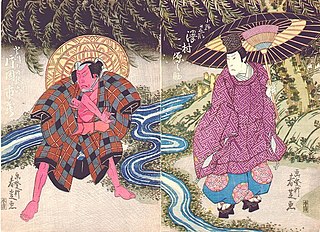 W
WGatōken Shunshi was a designer of ukiyo-e Japanese woodblock prints in Osaka who was active from about 1820 to 1828. He was a student of Shunkōsai Hokushū and the teacher of Gakōken Shunshi. Gatōken Shunshi is best known for his portraits of the kabuki actors, especially the star Onoe Tamizō II.
 W
WYozo Hamaguchi was a Japanese copper printmaker who specialized in mezzotint and was responsible for its resurgence as a printmaking medium in the mid-20th century. Hamaguchi’s prints are distinguished for their careful attention to detail of boldly hued animals and objects contrasted against a velvety black background. The corpus of Hamaguchi’s prints are focused on the still life genre.
 W
WGoyō Hashiguchi was an artist in Japan. At the forefront of the shin-hanga movement, a revival of ukiyo-e, he designed fourteen woodblock prints which are regarded as masterpieces of the genre.
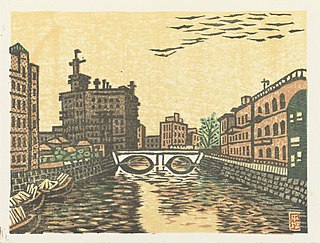 W
WUn'ichi Hiratsuka , born in Matsue, Shimane, was a Japanese woodblock printmaker. He was one of the prominent leaders of the sōsaku hanga movement in 20th century Japan.
 W
WHirosada II, also known as Sadahiro II, was a designer of ukiyo-e Japanese woodblock prints in Osaka. He was a student of Konishi Hirosada, and assumed the name “Hirosada” in 1853, when his teacher ceased designing prints. In the summer of 1864, Hirosada I died and his student changed his name, for a second time, from “Hirosada” (廣貞) to “Sadahiro” (貞廣).
 W
WUtagawa Hiroshige, born Andō Hiroshige, was a Japanese ukiyo-e artist, considered the last great master of that tradition.
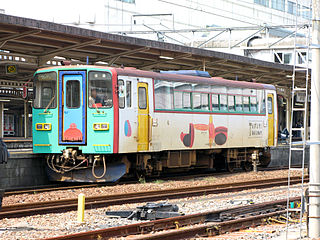 W
WMasuo Ikeda was a Japanese painter, printmaker, illustrator, sculptor, ceramist, novelist, and film director from Nagano Prefecture.
 W
WIshikawa Toyonobu was a Japanese ukiyo-e print artist. He is sometimes said to have been the same person as Nishimura Shigenobu, a contemporary ukiyo-e artist and student of Nishimura Shigenaga about whom very little is known.
 W
WShinsui Itō was the pseudonym of a Nihonga painter and ukiyo-e woodblock print artist in Taishō- and Shōwa-period Japan. He was one of the great names of the shin-hanga art movement, which revitalized the traditional art after it began to decline with the advent of photography in the early 20th century. His real name was Itō Hajime.
 W
WSuwa Kanenori (1897–1932) was a Japanese painter and woodblock print artist associated with the sōsaku hanga movement.
 W
WShiro Kasamatsu was a Japanese engraver and print maker trained in the Shin-Hanga and Sōsaku-Hanga styles of woodblock printing.
 W
WHasui Kawase was an artist, one of modern Japan's most important and prolific printmakers. He was a prominent designer of the shin-hanga movement, whose artists depicted traditional subjects with a style influenced by Western art. Like many earlier ukiyo-e prints, Hasui's works were commonly landscapes, but displayed atmospheric effects and natural lighting.
 W
WKikukawa Eizan was a designer of ukiyo-e style Japanese woodblock prints. He first studied with his father, Eiji, a minor painter of the Kanō school, and subsequently with Suzuki Nanrei (1775–1844), of the Shijō school. He is believed to have also studied with ukiyo-e artist Totoya Hokkei (1790–1850). He produced numerous woodblock prints of beautiful women (bijin-ga) in the 1830s, but then abandoned printmaking in favor of painting.
 W
WKohno Michisei was a Japanese painter, illustrator, and printmaker known for his association with the yōga movement of the early 20th century. His work is considered representative of the Taishō period in Japanese art.
 W
WKōno Bairei was a Japanese painter, book illustrator, and art teacher. He was born and lived in Kyoto. He was a member of the Ukiyo-e school and was a master of kacho-e painting in the Meiji period of Japan.
 W
WIsoda Koryūsai was a Japanese ukiyo-e print designer and painter active from 1769 to 1790.
 W
WKubota Beisen was a Japanese artist and art instructor in the Meiji period.
 W
WMasao Maeda was a woodblock print artist, born in Hakodate on the island of Hokkaidō, Japan.
 W
WMaki Haku is the artistic name of Maejima Tadaaki, who was born in Ibaraki Prefecture. He was a sōsaku-hanga artist in 20th Century Japan. During World War II, Maejima Tadaaki was trained as a kamikaze pilot in the Japanese air force, but the war ended before he was assigned a mission. Haku had no formal art training, but studied for two years with the sōsaku-hanga artist Onchi Kōshirō (1891–1955).
 W
WShikō Munakata was a woodblock printmaker active in Shōwa period Japan. He is associated with the sōsaku-hanga movement and the mingei movement. Munakata was awarded the "Prize of Excellence" at the Second International Print Exhibition in Lugano, Switzerland in 1952, and first prize at the São Paulo Bienal Exhibition in Brazil in 1955, followed by Grand Prix at the Venice Biennale in 1956, and the Order of Culture, the highest honor in the arts by the Japanese government in 1970.
 W
WGihachiro Okuyama was a 20th-century Japanese commercial artist and woodblock printmaker. He was a prolific artist of the shin-hanga and sōsaku-hanga styles. Okuyama is noted for his landscape prints, both in color and black-and-white, as well as his simple prints of scenes that interject elements of the modernization of Japan into an otherwise traditional view.
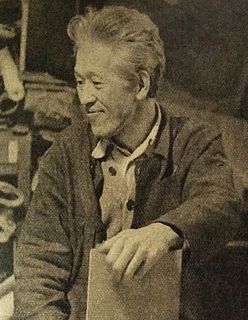 W
WKōshirō Onchi , born in Tokyo, was a Japanese print-maker. He was the father of the sōsaku-hanga movement in twentieth century Japan, and a photographer. His work was part of the painting event in the art competition at the 1932 Summer Olympics.
 W
WUtagawa Sadahide , also known as Gountei Sadahide, was a Japanese artist best known for his prints in the ukiyo-e style as a member of the Utagawa school. His prints covered a wide variety of genres; amongst his best known are his Yokohama-e pictures of foreigners in Yokohama in the 1860s, a period when he was a best-selling artist. He was a member of the Tokugawa shogunate's delegation to the International Exposition of 1867 in Paris.
 W
WKiyoshi Saitō was a sōsaku-hanga artist in 20th-century Japan. In 1938, he issued his first prints in his now famous "Winter in Aizu" series. Saitō was one of the first Japanese printmaking artists to have won at the São Paulo Biennale in 1951. Saitō's early works depict villages populated with local Japanese with a high degree of realism and three-dimensionality. His more mature works merge modern elements with Japanese tradition. His prints feature architecture and plant life flattened in two-dimensionality.
 W
WSekino Jun'ichirō was a Japanese woodblock printer, one of the major postwar artists of the sosaku hanga movement.
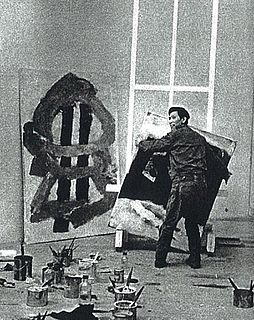 W
WKumi Sugai was a Japanese painter and printmaker.
 W
WHiroyuki Tajima was a Japanese printmaker of the sōsaku-hanga school. He was born in Tokyo and graduated from Nihon University in 1932. In 1943, he graduated from the Western-style painting division of the Tokyo School of Fine Arts. He created his first print in 1946, and joined the Bijutsu Bunka Kyokai the same year. He also studied Nagase Yoshi (1891–1978), an artist of the Sōsaku-hanga school. In 1963, he became a member of the Nihon Hanga Kyokai.
 W
WTakahashi Shōtei (高橋松亭), born Hiroaki was a 20th-century Japanese woodblock artist in the shin-hanga art movement.
 W
WTorii Kiyomasu was a Japanese painter and printmaker of the Torii school, in the genre of ukiyo-e. Like the other Torii artists, his primary focus was on Kabuki billboards, advertisements, actor prints, and other related material. Many scholars believe Kiyomasu to have been the younger brother or son of Torii Kiyonobu I, one of the founders of the school, or to have been an alternate art-name (gō) for the same man.
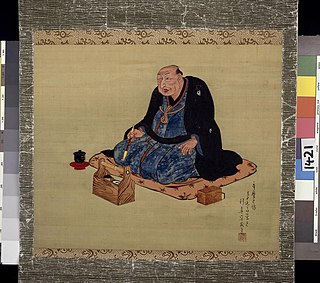 W
WKitagawa Utamaro was a Japanese artist. He is one of the most highly regarded designers of ukiyo-e woodblock prints and paintings, and is best known for his bijin ōkubi-e "large-headed pictures of beautiful women" of the 1790s. He also produced nature studies, particularly illustrated books of insects.
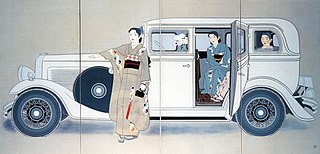 W
WYamakawa Shūhō was a Japanese painter active in the Taishō and Shōwa eras, as well as a printmaker of the Shin-hanga movement. He was born in Kyoto with the name Yamakawa Yoshio. His first teacher, Ikegami Shūhō (1874-1944), gave him the name Yamakawa Shūhō. Yamakawa then went on to study with Kiyokata Kaburagi. He also worked as an illustrator in the 1930s. In the late 1920s, he started designing woodblocks prints of beautiful women, many of which were published by Shōzaburō Watanabe. Yamakawa died of a cerebral hemorrhage in 1944.
 W
WYamamoto Shōun , who is also known as Matsutani Shōun, was a Japanese print designer, painter, and illustrator. He was born in the city of Kōchi in Kōchi Prefecture, into a family of retainers of the shōgun and was given the name Mosaburō. As a teenager, he studied Kanō-school painting with Yanagimoto Doso and Kawada Shoryu. At about age 17, he moved to Tokyo, where he studied Nanga painting with Taki Katei. At 20 years of age, he was employed as an illustrator for Fugoku gaho, a pictorial magazine dealing with the sights in and around Tokyo. In his latter career, Shōun primarily produced paintings. He died in 1965, at the age of 96.
 W
WHiroshi Yoshida was a 20th-century Japanese painter and woodblock printmaker. He is regarded as one of the greatest artists of the shin-hanga style, and is noted especially for his excellent landscape prints. Yoshida travelled widely, and was particularly known for his images of non-Japanese subjects done in traditional Japanese woodblock style, including the Taj Mahal, the Swiss Alps, the Grand Canyon, and other National Parks in the United States.